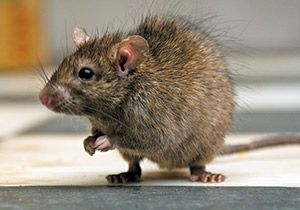
Buzz about bees!
Be amazed by these incredible insects…
Our Buzz about Bees primary resource introduces children to bees with seven mind-blowing facts about these amazing insects. How many times a minute does a bee beat its wings? What unusual use did the Ancient Greeks have for bee venom? Up to how many honeybees may live in a single hive…?
This primary resource can be used to introduce children to bees and other pollinating insects – as a printed handout for each pupil to review and annotate, or for display on the interactive whiteboard for class discussion.
Activity: The pupils could use this primary resource as a template for making their own ‘Buzz About Bees‘ poster, featuring 5-7 facts sourced from independent or group research. Alternatively, divide the class into groups and get each group to produce a fact-based, colourful poster on a different insect (perhaps specifically pollinating insects). The posters could be used as part of a classroom display.
N.B. The following information for mapping the resource documents to the school curriculum is specifically tailored to the English National Curriculum and Scottish Curriculum for Excellence. We are currently working to bring specifically tailored curriculum resource links for our other territories; including South Africa, Australia and New Zealand. If you have any queries about our upcoming curriculum resource links, please email: schools@ngkids.co.uk
This Animals primary resource assists with teaching the following Key Stage 1 Science (Year 1) objectives from the National Curriculum:
Pupils should be taught to:
- identify and name a variety of common animals that are carnivores, herbivores and omnivores
Pupils might work scientifically by: using their observations to compare and contrast animals at first hand or through videos and photographs, describing how they identify and group them; grouping animals according to what they eat; and using their senses to compare different textures, sounds and smells.
National Curriculum Key Stage 1 Science (Year 2) objective:
Pupils should be taught to:
- identify that most living things live in habitats to which they are suited and describe how different habitats provide for the basic needs of different kinds of animals and plants, and how they depend on each other
- describe how animals obtain their food from plants and other animals, using the idea of a simple food chain, and identify and name different sources of food.
Pupils should be introduced to the idea that all living things have certain characteristics that are essential for keeping them alive and healthy. They should raise and answer questions that help them to become familiar with the life processes that are common to all living things. Pupils should be introduced to the terms ‘habitat’ (a natural environment or home of a variety of plants and animals) and ‘micro-habitat’ (a very small habitat, for example for woodlice under stones, logs or leaf litter).
National Curriculum Lower Key Stage 2 Science (Year 3) objective:
Pupils should be taught to:
- identify that animals, including humans, need the right types and amount of nutrition, and that they cannot make their own food; they get nutrition from what they eat
- Compare and contrast the diets of different animals (including their pets) and decide ways of grouping them according to what they eat.
- identify and describe the functions of different parts of flowering plants: roots, stem/trunk, leaves and flowers
- explore the part that flowers play in the life cycle of flowering plants, including pollination, seed formation and seed dispersal.
National Curriculum Lower Key Stage 2 Science (Year 4) objective:
Pupils should be taught to:
- recognise that living things can be grouped in a variety of ways
- explore and use classification keys to help group, identify and name a variety of living things in their local and wider environment
This Animals primary resource assists with teaching the following Sciences First level objectives from the Scottish Curriculum for Excellence:
- I can explore examples of food chains and show an appreciation of how animals and plants depend on each other for food.
Scottish Curriculum for Excellence Second level Sciences objectives:
- I can identify and classify examples of living things, past and present, to help me appreciate their diversity. I can relate physical and behavioural characteristics to their survival or extinction.
- I can use my knowledge of the interactions and energy flow between plants and animals in ecosystems, food chains and webs.
Scottish Curriculum for Excellence Third level Sciences objectives:
- I can sample and identify living things from different habitats to compare their biodiversity and can suggest reasons for their distribution.
- I have collaborated on investigations into the process of photosynthesis and I can demonstrate my understanding of why plants are vital to sustaining life on Earth
Scottish Curriculum for Excellence Fourth level Sciences objectives:
- I understand how animal and plant species depend on each other and how living things are adapted for survival.
Download primary resource
More Like

10 facts about rats!
What’s it like to go to school in St Lucia?

10 top LEGO facts!









LEAVE A COMMENT
THANK YOU
Your comment will be checked and approved shortly.
WELL DONE,
YOUR COMMENT
HAS BEEN ADDED!
COMMENTS
That was amazing
CUSTOMIZE YOUR AVATAR